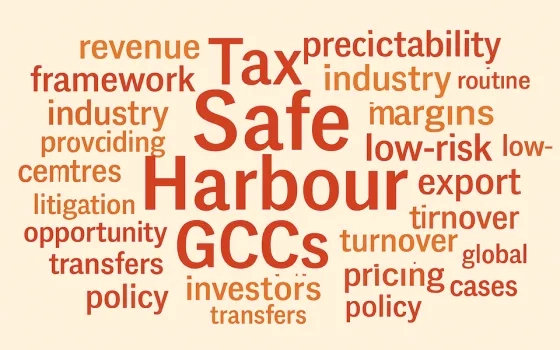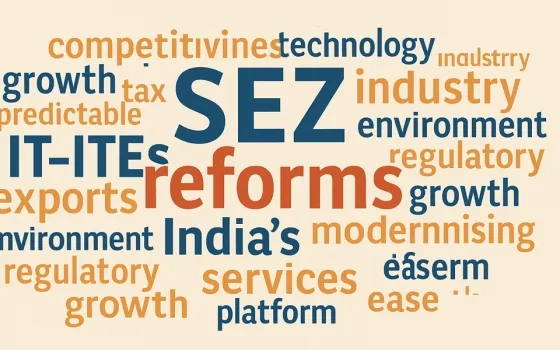Objective
The purpose of this document is to discuss the draft report (Report) of the Committee constituted by the Central Board of Direct Taxes (CBDT) on ‘Amendment of rules for profit attribution to Permanent Establishment’. The Report has been issued by the Committee in view of the significance of issues relating to profit attribution to a PE as well as the need to bring greater clarity and predictability in the applicable tax regime.
Background and position under the current law
Taxation of profits attributable to a Permanent Establishment (PE) is a matter of global concern, including in India. Lack of definitive rules under the Income Tax Act, 1961 (IT Act) and inconsistent allocation by the courts in different case laws has led to a lot of uncertainty in taxation for non-residents.
Under section 5 of the IT Act, global income of a resident in India is taxable. However, taxability of income of a non-resident is limited to income that arises or accrues in India, is deemed to accrue or arise in India or is received or deemed to be received in India.
Section 9 of the IT Act deals with income that is deemed to accrue or arise in India. As per clause (i) of sub-section (1) of the said section, “all income accruing or arising, whether directly or indirectly, through or from any business connection in India, or through or from any property in India, or through or from any asset or source of income in India, or through the transfer of a capital asset situate in India” are deemed to accrue or arise in India, thereby elaborating upon the scope of income that would be taxable in India. The concept of business connection[1] has been expanded[2] to explicitly include significant economic presence within the scope of business connection.
Further, income under the head “profits and gains of business or profession” (PGBP) is to be determined under the applicable provisions, and the taxpayers are required to maintain books of account and financial statements for this purpose. However, where such books of account are either not maintained or it may not be possible to determine the actual profits from such books of account, the Assessing Officer can resort to secondary options prescribed in Rule 10 of the Rules, which provides as under:
“In any case in which the Assessing Officer (AO) is of opinion that the actual amount of the income accruing or arising to any non-resident person whether directly or indirectly, through or from any business connection in India or through or from any property in India or through or from any asset or source of income in India or through or from any money lent at interest and brought into India in cash or in kind cannot be definitely ascertained, the amount of such income for the purposes of assessment to income-tax may be calculated :—
(i) at such percentage of the turnover so accruing or arising as the AO may consider to be reasonable, or
(ii) on any amount which bears the same proportion to the total profits and gains of the business of such person (such profits and gains being computed in accordance with the provisions of the Act), as the receipts so accruing or arising bear to the total receipts of the business, or
(iii) in such other manner as the Assessing Officer may deem suitable.”
While the first two methods are relatively specific, the third method allows the AO to apply any variation of the first two methods or any other method that he considers applicable in that case.
As a step towards bringing certainty for attribution of profits to a PE, the CBDT released this Report providing proposals for consideration on amendment of rules for profit attribution to permanent establishment. Accordingly, based on our members’ feedback, certain observations/ issues on the proposed approach are placed for discussed below.
Observations/ Issues
- Deviation from well-established Transfer Pricing (TP) principles – The concept of Arm’s Length Principle (ALP) under Transfer Pricing (TP) for attribution of profits to PE’s is already present implicitly under paragraph 2 in the earlier version of Article 7 of the OECD Model Convention, the UN Model Tax convention and most of India’s tax treaties. The current recommendations in the revised version of Article 7 of the OECD Model Convention, 2010 are merely making the same explicit as an Authorised OECD Approach i.e. attribution of profit to PE on the basis of Functions, Assets and Risk (FAR). Further, many judicial decisions have also recognized that if the profit is attributed to the PEs following the ALP, no further attribution is required. Further, the Committee’s conclusion that resorting to FAR analysis yields the “supply approach” for attribution of profits to PE’s and thereby completely ignores contribution of the demand side, appears to be incorrect. In practice, ALP under TP aims to allocate profits amongst various enterprises within an MNE group, including PEs, with reference to the FAR profiles of each such enterprise, without any bias whatsoever towards either the jurisdiction of the market or that of supply.
Discussion point: Applicability of ALP under TP for the purposes of attribution of profits to PEs to supplement any uncertainty.
- Rule 10 is only a residuary mechanism – While including any amendments in the profit attribution rules, it is not clear if Rule 10 will be applied only in situations where India specific financial statements are not available.
Discussion point: Applicability of Rule 10 of Income Tax Rules.
- Applicability of user based profit attribution formula under Article 7 of tax treaty – The Report suggests that in case a ‘business connection’ is primarily constituted through the existence of users beyond prescribed threshold in India i.e. Significant Economic Presence (SEP), income attributable to operations carried out in India should be calculated on four factor basis i.e. users, sales, employees and assets depending on the level of user intensity.
It is contextual that the concept of SEP is provided under the IT Act and is currently not present in the Indian tax treaties. Therefore, in case an enterprise constitutes a business connection on account of SEP in India as per the IT Act and also forms a PE as per the applicable Double Taxation Avoidance Agreement (DTAA), it is not clear as to whether the profits should be attributed on the three factor based profit attribution formula or user based profit attribution formula.
Discussion Point: Manner of attribution of profits in case a business connection is established on account of SEP in India as per the IT Act and also forms a PE as per DTAA.
- Assignment of ad-hoc weights to demand and supply side factors – The weights assigned are not based on any economic exercise or economic study that ascertains what factors have contributed to the generation of revenues and resulting profits or losses and their relative proportions. There is no economic justification to applying a standard ad hoc set of weights to three or four factors. The approach proposed appears arbitrary and without being sensitive to any factual and economic basis.
Discussion Point: Impact of assigning the proposed ad-hoc weights to demand and supply factors and related concerns.
- Assignment of ad-hoc weights to user in user based profit attribution formula – The Report outlines a weightage of 10% / 20% to users in user based profit attribution formula. The Report observes that since the users carry out the work of employees and are also assets to the enterprise, the relative weightage of employees and assets to be adjusted downwards (to 60% / 50%), keeping the weightage of sales fixed at 30%. This reasoning seems flawed as it is clear that raw data in itself is not entirely useful and the value is created (if at all) by using analytics which is where the functions, assets and risks reside. Users are not a substitute for assets and employees in a digital business. In fact, arguably users are a proxy for sales, rather than a proxy for employees and hence constitute a demand-side variable rather than a supply side one. Further, entrepreneurial risk and intellectual property ownership parameters amongst others, are totally ignored in these factors.
Discussion Point: Impact of assigning the proposed ad-hoc weights to user in user based profit attribution formula depending on the level of user intensity and related concerns.
- Computation of global operational profit margin – In order to determine profits derived from India, EBITDA (Earnings before interests, taxes, depreciation and amortization) shall be considered as a global operational profit margin. This appears to be inconsistent with basic economic and taxation tenets as interest, depreciation and amortization are deductible expenses under the Income Tax Act. Further, the proposed methodology is prejudicial for companies which are engaged in a business undertaking heavy capital investment and major research and development initiatives.
Discussion point: Clarity on computation of global operational profit margin and treatment of interest, depreciation and amortization while calculating the same.
- Ambiguous interpretation of terms used in formulary apportionment method – As the report does not objectively describe several elements of the apportionment formula, it is bound to lead to more uncertainty. To bring greater clarity and objectivity in PE profit attribution under treaties and domestic law, it will be important to understand the treatment of the following:
- Calculation of revenue derived from India;
- Treatment of sales revenue derived by India operation from sales outside India;
- Attribution of wages to Indian operations with respect to employees that perform functions for the entities across the globe – specifically in the context of arrangements of assignees in stewardship roles, short-term/ long term secondments;
- Treatment of wages paid to employees including employee stock options, commission on sales;
- Treatment of employees with respect to Indian operations, specifically in view of employees working across the globe and performing functions for global operations (including India);
- Treatment of employees with respect to Indian operations including employees undertaking administrative activities (such as finance, policy supervision, etc), contract work force, consultants, temporary staff;
- Whether equal weightage be given to employees working in R&D and employees working in back office support centre;
- Consideration be provided to nature of work performed by employees compared to quantum of employees in India or outside India since strategic functions are usually performed by the management outside India;
- Treatment of assets employed for Indian operations including non-operating assets such as cash, marketable securities, leased assets, etc., treatment of intangible assets, other assets not appearing the balance sheet;
- Calculation of assets deployed with respect to Indian operations, specifically in view of assets that are also made available to overseas customers for overseas operations (including India);
- Methodology to be followed for valuing assets, especially intangible assets on and off the balance sheet;
- Whether book value or economic valuation of intangible assets to be considered;
- Calculation of users in India and how to determine the user base;
- Define “low” and “medium” user intensity business models
Discussion point: Understanding of the treatment and clarity on the above mentioned scenarios for calculation of each factor for profit determination.
- Different attribution rules for PE and subsidiary of foreign company in India – Any exercise of profit attribution should provide principled, consistent results, de hors of the entity form or PE. The said proposal prescribes rules which would result in two different set of tax rules as well as taxable profits for subsidiaries and PEs undertaking similar activities. ALP is foundational to the attribution of profits and determination of transfer prices – the existence of a PE or Associated Enterprise (AE) relationship is only a form of legal entity. This should not colour the determination of how profits are to be attributed or transfer prices are to be determined.
Discussion point: Would the proposals result in two different set of tax rules as well as taxable profits for subsidiaries and PEs undertaking similar activities? What is the implication?
- Minimum profit requirement of 2% as profits derived from Indian operations – CBDT’s proposal of deemed profits of minimum of 2% of the revenue derived from India is not in line with the economic as well as the commercial considerations entailing business operations specifically in cases where the real income is actually a loss and thus, this is against the principle of taxation. This approach carries risk of issue of reciprocity by other jurisdictions. Further, MNEs may face practical challenge of claiming credits in the head office jurisdiction if multiple jurisdictions were to adopt similar approach of ascertaining that a PE should invariably make profits.
Discussion points:
- Rationale for levy of 2% deemed profits as profits derived from Indian operations and issues relating to the potential risk of double taxation (since there will be no tax in the jurisdiction of residence, so the tax paid in India will be a sunk cost).
- Further, evaluating if at all carry forward of credit for taxes paid under such a regime will resolve the issue (similar to credit of Minimum Alternate Tax (MAT) paid). Alternatively, evaluating if introduction of presumptive taxation with an option to opt out will address the issue.
- Computational challenges – Computational challenge for taxpayers as well as Revenue would remain for collating reliable data in respect of global and India sales, manpower and assets; data points particularly in respect of manpower costs could be highly confidential too and may not be readily available. Therefore, considering the said challenge, one may tend to assume hypothetical numbers which would lead to mismatch in taxable profits of PE (and consequent foreign tax credit) in India and residence country and thus, requiring resolution through bilateral procedures (Mutual Agreement Procedure or Alternate Dispute Resolution) under the tax treaty.
Discussion point: Identifying various computational challenges and suggesting treatment.
- Alignment with the outcome of OECD/ G20 Inclusive Framework initiatives– Any solution on profit attribution should place a high emphasis on simplicity and certainty. The OECD/ G20 has been actively working on a consensus based approach to achieve stability and tax certainty for enterprises and tax administrations. Unilateral measures by countries, not in accordance with international consensus, will undermine this global effort and will result in double taxation.
Discussion point: Concerns arising out of India’s proposed rules not being aligned to the discussions at the OECD/ G20. How can India protect its interest while being aligned to the Inclusive Framework?
- Provide specific examples to explain fractional apportionment formula – It will be helpful if the final report includes specific examples with numbers for various situations / industry to explain fractional apportionment formula in more detail to avoid any possible ambiguity around the formula.
[1] As explained in Explanations 1 and 2 to clause (i) of sub-section (1) of section 9 of the IT Act
[2] Vide Finance Act 2018











